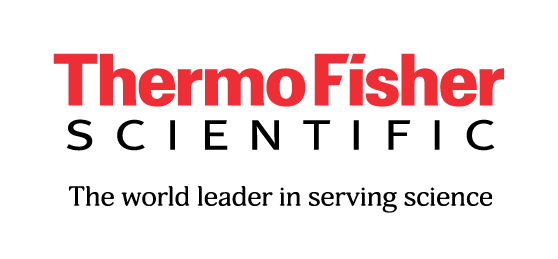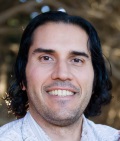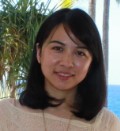Table of Contents |
guest 2025-07-12 |
Event Information
Speakers
Robert Ahrends
Christopher Ashwood
Paul Auger
Buyun Chen
Yao Chen
Don Davis
Kristin Geddes
Michael MacCoss
Brendan MacLean
Lindsay Pino
Thanks!
The seventh annual Skyline User Group Meeting was held in June 3rd at the spectacular San Diego Central Library. Within the architecturally award-winning facility, our space featured a folding glass wall where attendees could enjoy lunch "al fresco" on the outside patio beforehand and then we moved into a lovely auditorium to hear about new "omic's" research approaches and methods using Skyline and Panorama. With about 200 in attendance, host Mike MacCoss from UW introduced the afternoon's talks and gave a brief overview of Skyline's nine-year history. The three and a half-hour program that followed featured speakers from all walks of mass spectrometry describing the ways that Skyline and Panorama have not only enhanced their research but in some cases, made their research even possible. As in previous years, the fast-paced meeting featured a mixture of full-length 20-minute talks as well as "lightening talks" -- five minutes to give an overview of one's research.
All the sessions were recorded and can be accessed under the link's for each speaker below.
Lastly the Skyline team would like to thank all eight speakers for preparing and giving up their Sunday afternoon before ASMS to present at our forum. Also, we'd like to once again, heartfully thank our instrument vendor sponsors who make the event possible each year and allow us to offer it without cost to attendees.
Thank you!
-- Brendan MacLean and Mike MacCoss
Event Organizers
Michael J. MacCoss, Ph.D. (University of Washington): Introduction and event host
Brendan MacLean, (MacCoss Lab, University of Washington): Status of the Skyline open-source software project 9 years after its inception
The Skyline project started just after ASMS 2008 as a 2-year effort to bring better SRM/MRM software tools to the NCI-CPTAC Verification Working Group that could support the variety of mass spectrometers in use in participating laboratories. Nearly 9 years later, the Skyline project is a thriving proteomics community open-source collaboration supporting 6 mass spec instrument vendors integrated with a wide variety of external software, with thousands of users worldwide and many thousands of instances started each week. (More info...)
Christopher Ashwood, (Macquarie University): Applications of Skyline for automated profiling of cellular protein glycosylation
Our research examines automated methods to discriminate between structurally similar isomers and overcoming a bottleneck in the data analysis of LC-MS-based glycomics.(More info...)
Paul Auger, (Genentech): Automated quality control and system suitability in Panorama for peptide and small molecule analysis
Rapid and automated standard analysis and visualization was once a tedious chore for most routine mass spectrometry users. The introduction of AutoQC to Labkey’s Panorama module in 2015 was the culmination of a vision to place the assessment of multiple data metrics, inspired by Statistical Process Control in Proteomics(SProCoP), into an automated and easily accessed platform. (More info...)
Yao Chen, Ph.D., (Catalent Biologics): Independent Digestion with Two Protease Enzymes Combining LC-HRMS Data Independent Acquisition (DIA)
Peroxide and leachable metals induced chemical modifications are among the most import quality attributes in process development. However, overall characterization covering all common modifications in a therapeutic protein has not been previously reported. We describe a global characterization of a leachable metal- and/or peroxide- stressed human IgG1 mAb using bottom-up, liquid chromatography-high-resolution mass spectrometry to monitor 59 chemical modifications with maximum coverage. (More info...)
Kristin Geddes, (Merck): Implementation of Panorama into Daily Workflows and Quantitative Protein PK Analysis in the Pharmaceutical Setting
The transition from detailed data analysis within Skyline to routine outputs such as reports for customers and collaborators, and inputting processed data into standard pharmacokinetic data analysis workflows continues to be a time-consuming challenge. We have employed Panorama as a tool to facilitate the translation of Skyline documents into user friendly, interactive quantitation reports. In addition to the previously supported calibration curves and data tables, Panorama now calculates basic figures of merit and pharmacokinetic parameters. (More info...)
Lindsay Pino, (University of Washington): Signal Calibration for Quantitative Proteomic
We present a simple and inexpensive strategy for single point intensity calibration using a common external reference sample. We show that this calibration, minimizes quantitative variance between day, between instrument platforms, and between laboratories. As long as labs perform their measurements relative to the same reference, quantitative measurements are calibrated on the same scale. A strategy for defining the performance limits of each measured analyte using a novel strategy for creating a “matched matrix calibration curve” will be presented for assessment of the LOD and LOQ. (More info...)
Lightning Talks
Robert Ahrends, Ph.D., (ISAS): LipidCreator: A new skyline plugin for targeted LC-MS/MS-based lipidomics
We developed a native tool named “LipidCreator” to strengthen the LC-MS/MS-based targeted lipidomics workflow and to provide a user-friendly interface for lipid researchers. This tool has several features including i) using lipid building blocks, ii) latest lipid nomenclature, iii) lipid fragmentation rules, iv) transition mass-calculator, v) an in-silico spectral library generator and vi) a full integration with new small molecule support in Skyline (More info...)
Buyun Chen, (Genentech): Important considerations for LC-MS based drug transporter quantitation
When transporters play a major role in drug disposition, PBPK modeling faces challenges of lacking physiological data such as transporters’ expression abundance and their demographic differences. In our study we used MDR1 as an example to show how different surrogate peptide could impact the quantitation result and why. (More info...)
Don Davis, (Vanderbilt University): The Development, Validation and Clinical Application of a LC – MS/MS Method for Absolute Quantification of Anti-Epileptic Drugs in Serum
Routine quantification of Anti-Epileptic Drug (AED) small molecules in clinical laboratories is challenging as current methods, such as immunoassays and liquid chromatography - UV detection do not possess either the selectivity, or the low limits of detection and quantification required in clinical applications. This work reports a RPLC – MS/MS method to detect and quantify AEDs in human blood serum. (More info...)
Event Information
Welcome
The Skyline Team is pleased to announce the Seventh Annual Skyline User Group Meeting, which will be held in San Diego, CA on Sunday afternoon before ASMS. We would like to thank the event sponsors (see below) for their generosity and interest in collaborating with the Skyline project on exciting new targeted and quantitative mass spec techniques.
--Brendan
When: Sunday, June 3, 2018
12:00 - 1:00 pm : Lunch served
1:00 - 2:30 pm : Presentations
2:30 - 3:00 pm : Snacks and break-out discussions
3:00 - 4:30 pm : Presentations
Where: San Diego Central Library 330 Park Blvd., San Diego, CA 92101 - Downtown East Village, Park Boulevard at 11th Avenue, near Petco Park (map)
- Designed by famed architect Rob Ellington Quigley, the San Diego Central Library will be the host of this year's Skyline User Group Meeting. The library is a 10 minute walk (.6 mile) from ASMS in the San Diego Convention Center.
- From the Convention Center, cross over rail tracks on skybridge to get to 5th Ave. Continue on 5th Ave and turn right on J Street. Continue on J Street for seven blocks and turn right onto Park Blvd and the entrance of the library.
- The meeting will be held in the Neil Morgan Auditorium on the ground floor of the library with lunch beforehand in the roped-off portion of the lobby.
- Get a coveted, first-run Skyline and Panorama embossed coffee mug for your morning caffeine ritual!
[registration closed]
We have closed down our registration process but you can still attend! Please just come to San Diego Central Library for "day of" registration.
Confirmed Speakers
Michael J. MacCoss, Ph.D. (University of Washington): Introduction and event host
Brendan MacLean, (MacCoss Lab, University of Washington): Status of the Skyline open-source software project 9 years after its inception
The Skyline project started just after ASMS 2008 as a 2-year effort to bring better SRM/MRM software tools to the NCI-CPTAC Verification Working Group that could support the variety of mass spectrometers in use in participating laboratories. Nearly 9 years later, the Skyline project is a thriving proteomics community open-source collaboration supporting 6 mass spec instrument vendors integrated with a wide variety of external software, with thousands of users worldwide and many thousands of instances started each week. (More info...)
Christopher Ashwood, (Macquarie University): Applications of Skyline for automated profiling of cellular protein glycosylation
Our research examines automated methods to discriminate between structurally similar isomers and overcoming a bottleneck in the data analysis of LC-MS-based glycomics.(More info...)
Paul Auger, (Genentech): Automated quality control and system suitability in Panorama for peptide and small molecule analysis
Rapid and automated standard analysis and visualization was once a tedious chore for most routine mass spectrometry users. The introduction of AutoQC to Labkey’s Panorama module in 2015 was the culmination of a vision to place the assessment of multiple data metrics, inspired by Statistical Process Control in Proteomics(SProCoP), into an automated and easily accessed platform. (More info...)
Yao Chen, Ph.D., (Catalent Biologics): Independent Digestion with Two Protease Enzymes Combining LC-HRMS Data Independent Acquisition (DIA)
Peroxide and leachable metals induced chemical modifications are among the most import quality attributes in process development. However, overall characterization covering all common modifications in a therapeutic protein has not been previously reported. We describe a global characterization of a leachable metal- and/or peroxide- stressed human IgG1 mAb using bottom-up, liquid chromatography-high-resolution mass spectrometry to monitor 59 chemical modifications with maximum coverage. (More info...)
Kristin Geddes, (Merck): Implementation of Panorama into Daily Workflows and Quantitative Protein PK Analysis in the Pharmaceutical Setting
The transition from detailed data analysis within Skyline to routine outputs such as reports for customers and collaborators, and inputting processed data into standard pharmacokinetic data analysis workflows continues to be a time-consuming challenge. We have employed Panorama as a tool to facilitate the translation of Skyline documents into user friendly, interactive quantitation reports. In addition to the previously supported calibration curves and data tables, Panorama now calculates basic figures of merit and pharmacokinetic parameters. (More info...)
Lindsay Pino, (University of Washington): Signal Calibration for Quantitative Proteomic
We present a simple and inexpensive strategy for single point intensity calibration using a common external reference sample. We show that this calibration, minimizes quantitative variance between day, between instrument platforms, and between laboratories. As long as labs perform their measurements relative to the same reference, quantitative measurements are calibrated on the same scale. A strategy for defining the performance limits of each measured analyte using a novel strategy for creating a “matched matrix calibration curve” will be presented for assessment of the LOD and LOQ. (More info...)
Lightning Talks
Robert Ahrends, Ph.D., (ISAS): LipidCreator: A new skyline plugin for targeted LC-MS/MS-based lipidomics
We developed a native tool named “LipidCreator” to strengthen the LC-MS/MS-based targeted lipidomics workflow and to provide a user-friendly interface for lipid researchers. This tool has several features including i) using lipid building blocks, ii) latest lipid nomenclature, iii) lipid fragmentation rules, iv) transition mass-calculator, v) an in-silico spectral library generator and vi) a full integration with new small molecule support in Skyline (More info...)
Buyun Chen, (Genentech): Important considerations for LC-MS based drug transporter quantitation
When transporters play a major role in drug disposition, PBPK modeling faces challenges of lacking physiological data such as transporters’ expression abundance and their demographic differences. In our study we used MDR1 as an example to show how different surrogate peptide could impact the quantitation result and why. (More info...)
Don Davis, (Vanderbilt University): The Development, Validation and Clinical Application of a LC – MS/MS Method for Absolute Quantification of Anti-Epileptic Drugs in Serum
Routine quantification of Anti-Epileptic Drug (AED) small molecules in clinical laboratories is challenging as current methods, such as immunoassays and liquid chromatography - UV detection do not possess either the selectivity, or the low limits of detection and quantification required in clinical applications. This work reports a RPLC – MS/MS method to detect and quantify AEDs in human blood serum. (More info...)
Sponsors
 |
 |
 |
 |
 |
 |
 |
 |
Speakers
Ten speakers with interesting and different areas of expertise in Skyline use and development are scheduled to speak at the Skyline User Group Meeting at ASMS 2018 in San Diego, CA.
Robert Ahrends
 |
Robert Ahrends, Ph.D., is heading the lipidomics group at ISAS (ISAS, Dortmund, Germany). He received his Ph.D. in analytical chemistry, Humboldt University of Berlin. After his postdoc at Stanford Medical School, he started his own lab. Here his team focusses on global and signaling lipidomics in cardiovascular research such as the heart, platelets or fat cells. Their main interest is to combine quantitative information to a true systems biology approach, answering open questions such as how platelet activation is perturbed in different disease models. To do so, targeted assay development is one of the cornerstones of the team. Therefore, the team developed LipidCreator, a transition and spectrum prediction tool for lipidomics allowing the large-scale assays generation.
LipidCreator: A new Skyline plugin for targeted LC-MS/MS-based lipidomicsWe developed a native tool named “LipidCreator” to strengthen the LC-MS/MS-based targeted lipidomics workflow and to provide a user-friendly interface for lipid researchers. This tool has several features including i) using lipid building blocks, ii) latest lipid nomenclature, iii) lipid fragmentation rules, iv) transition mass-calculator, v) an in-silico spectral library generator and vi) a full integration with new small molecule support in Skyline. LipidCreator provides 5 categories, 59 lipid classes, 89 lipid mediators with multiple adducts and pre-defined fragmentation patterns. Read More LipidCreator supports using user-defined fragment creation. Furthermore, transitions for isotope coded lipid species can be calculated. By providing an in-silico spectral library computing system for lipid species from known lipid fragmentation patterns, LipidCreator bridges the gap between targeted and non-targeted LC-MS/MS-based lipidomics.
[PDF] |
Christopher Ashwood
 |
Christopher Ashwood is a Postdoctoral Fellow at the Medical College of Wisconsin, USA, as part of the Gundry Lab. He is obtaining his PhD at Macquarie University, Australia under the supervision of Prof. Nicki Packer. He obtained a Master of Research investigating the glycosylation pathway of fungus in 2015 and his Ph.D. focuses on advancing PGC-LC-ESI-MS/MS for glycomics with applications in TLR4-mediated inflammation, submitting this year. Chris has performed oral presentations regarding technical and software applications in the area of glycomics at HUPO in 2016, as part of a Thermo Scientific workshop, and in 2017, as part of the main program.
Applications of Skyline for automated profiling of cellular protein glycosylationProfiling protein glycosylation is challenging due to the presence of highly similar glycan structures that play diverse roles in cellular physiology. As the anomericity of a single glycosidic bond can influence glycan function, there is a demand for automated methods to discriminate between structurally similar isomers, overcoming a bottleneck in the data analysis of LC-MS-based glycomics.Using internal standards in combination with separation based on glycan structure, we obtain normalised retention times for >200 glycans, covering >95% of glycans released from a human cell lysate. Interrogating similar fragment spectra from structurally related glycan isomers, discriminatory product ions were discovered. Using Skyline, high specificity product ions were validated for automated glycan isomer discrimination. Read More Finally, we combine both approaches, building an annotated spectral library of >200 glycan structures with normalised retention values. We apply this spectral library in Skyline for automated glycan profiling of cell lines and tissues, achieving confident peak assignment.
[PDF] |
Paul Auger
 |
Paul Auger
is currently a Senior Scientific Researcher in the Biomarker Development department at Genentech where he develops quantitative assays for both potential diagnostic and phamacodynamic biomarkers to support the biomarker strategies of therapeutic molecules in the clinic. Prior to joining Genentech Paul held multiple industry positions including similar roles at Amgen and Human Genome Sciences. Paul obtained his Undergraduate degree from St. Mary’s College of Maryland and his Masters from Johns Hopkins University.
Automated quality control and system suitability in Panorama for peptide and small molecule analysisRapid and automated standard analysis and visualization was once a tedious chore for most routine mass spectrometry users. The introduction of AutoQC to Labkey’s Panorama module in 2015 was the culmination of a vision to place the assessment of multiple data metrics, inspired by Statistical Process Control in Proteomics(SProCoP), into an automated and easily accessed platform. Read MoreAutoQC utilizes Skyline runner to push data into Skyline for automated processing, and then shuttles that processed data to Panorama for visualization and analysis. The establishment of the AutoQC workflow within our labs has set a baseline for instrument and assay performance. Continued utilization of AutoQC allows for rapid assessment of sample and instrument integrity.
[PDF] |
Buyun Chen
 |
Buyun Chen, Ph.D.,
received her B.S. from Fudan University and PhD from University of Georgia. She has worked in Abbvie and Genentech after graduation. She is currently the leader of DMPK biomarker and proteomics Working Group of Genentech and serves on the steering committee of the Bioanalytical Focus Group of AAPS.
Important considerations for LC-MS based drug transporter quantitationPBPK modeling is gaining wider regulatory acceptance for supporting decisions on whether, when, and how to conduct certain clinical pharmacology studies and to support dosing recommendations in product labeling. However, when transporters play a major role in drug disposition, PBPK modeling faces challenges of lacking physiological data such as transporters’ expression abundance and their demographic differences. By employing LC-MS based targeted proteomics approach, DMPK community has generated data on various transporters’ abundance. Read More However, significant variation (up to 100 fold) between different assays leaves transporter related PBPK modeling remained to be difficult. In our study we used MDR1 as an example to show how different surrogate peptide could impact the quantitation result and why.
[PDF] |
Yao Chen
Yao Chen, Ph.D.,
received his Ph.D. in the Department of Pharmaceutical Chemistry, University of Kansas, where he worked on LC-MS based quantifications of membrane-bound drug-metabolizing enzymes or drug-transporters. Upon graduation, he joined Catalent Biologics in Bloomington, IN and started a career as an analytical scientist, with the routine work of identifications and quantification of pharmaceutical impurities, host-cell proteins, post-translational modifications, sequence variance / mis-substitutions, etc. with LC-MS. Global characterization of chemical modification is the main topic of his recent first author manuscript submitted to MCP.
Global Characterization of Human IgG1 under Oxidative Stresses—Independent Digestion with Two Protease Enzymes Combining LC-HRMS Data Independent Acquisition (DIA)Peroxide and leachable metals induced chemical modifications are among the most import quality attributes in process development. However, overall characterization covering all common modifications in a therapeutic protein has not been previously reported. We describe a global characterization of a leachable metal- and/or peroxide- stressed human IgG1 mAb using bottom-up, liquid chromatography-high-resolution mass spectrometry to monitor 59 chemical modifications with maximum coverage. Read More Skyline was used to generate all the combinations of modified peptides and to filter false positive identifications. Each identification, which allowed up to 3 modifications per peptide and maximum 4 miscleavages, went through 5 and 10 ppm of precursor or product ion mass filters, obtained by as much as 4 rounds of exhaustive searching, survived 3 barriers of false positive eliminations, and cross-validated by trypsin and chymotrypsin digests. Dual digestions enhanced the sequence coverage and modification visibility. Up to 54 modifications sites were found and the rank of amino acids’ propensity to react in trastuzumab were: Met> Asn> Leu/Ile> Glu> Arg> Cys(C-C)> His > Trp> Tyr> Phe> Thr> Val. Two potential undiscovered metal binding sites and one previously hypothesized binding site were found differentially modified in H2O2 and/or leachable metals stressed conditions. Modifications on trastuzumab binding interphases (Leu H238, His H272, His H437 and AsnH438) to FcɣRIII, complement protein C1q, and FcRn were observed, which could affect their binding activities or even their corresponding physiological functions. Global characterization assay not only offers a broader and deeper views into IgG1 PTMs, but also shows a more complete picture on how oxidative stresses might potentially impact mAb’s functionalities.
[PDF] |
Don Davis
 |
Don Davis
Prior to coming to Vanderbilt and working with Dr. John McLean, Davis worked with Dr. Jorge Albina at Brown University. The Albina lab studies the origin of repair macrophages and how infection alters the healing process. This research is critical because wound repair macrophages produce cytokines (proteins) that promote healing and inflammation. Davis' work analyzed how small molecules (flavonoids) played a role in wound healing using ELISA analytical techniques. Flavonoids have been shown to inhibit lipopolysaccharide (LPS) stimulated pro-inflammatory cytokines (TNF-α and IL-6) from macrophage cell lines in vitro; however, little is known about the effect of flavonoids on wound repair macrophages ex vivo. Results showed fisetin (5 & 10 µM) inhibiting pro-inflammatory cytokines TNF-α and IL-6 in ex vivo macrophages but toxic at 20 µM.
The Development, Validation and Clinical Application of a LC – MS/MS Method for Absolute Quantification of Anti-Epileptic Drugs in SerumRoutine quantification of Anti-Epileptic Drug (AED) small molecules in clinical laboratories is challenging as current methods, such as immunoassays and liquid chromatography - UV detection do not possess either the selectivity, or the low limits of detection and quantification required in clinical applications. This work reports a RPLC – MS/MS method to detect and quantify AEDs in human blood serum. Calibration curves for each AED extracted from serum were generated via Skyline to assess the range of linearity, sensitivity, and other figures of merit (e.g. LOD, LLOQ and ULOQ). Read More The optimized method described herein provides sample preparation procedures to extract AEDs from blood serum and assesses AED analyte recovery, matrix effects, precision, accuracy, differentiation, stability and carry-over. This method will provide clinical laboratories with a robust and selective quantitative protocol for measuring AEDs in blood serum and clinicians the information necessary to minimize side effects and individually optimize AED medication dosage.
[PDF] |
Kristin Geddes
 |
Kristin Geddes
received her B.S. in Clinical Laboratory Sciences from the University of Delaware. She began her career as Medical Technologist focused on Virology at the Children’s Hospital of Philadelphia. Kristin joined Merck Research Labs in 2006 and has developed analytical experience across a host of analytical platforms and a wide range of modalities, including small molecules, siRNA and proteins. She spent several years in the RNAi group, developing and applying new analytical techniques to support this unique nucleotide-based modality. More recently, Kristin’s primary focus has been on protein analysis from tissues, where she has collaborated with several groups to automate and apply protein quantitation in tissue.
Implementation of Panorama into Daily Workflows and Quantitative Protein PK Analysis in the Pharmaceutical SettingWith the continued growth of protein therapeutics in the biopharmaceutical industry, great progress has been made in terms of sample preparation and instrumentation in support of bioanalysis of these molecules. Current LC/MS-based workflows to quantitate these molecules within biological samples often utilize Skyline for data analysis. However, the transition from detailed data analysis within Skyline to routine outputs such as reports for customers and collaborators, and inputting processed data into standard pharmacokinetic data analysis workflows continues to be an often time consuming challenge. Read More
We have employed Panorama as a tool to facilitate the translation of Skyline documents into user friendly, interactive quantitation reports. In addition to the previously supported calibration curves and data tables, Panorama now calculates basic figures of merit and pharmacokinetic parameters. These expanded capabilities within Panorama facilitate shortened data-processing and analysis cycle times and provides a valuable communication and visualization tool to analyst and collaborators alike.
[PDF] |
Michael MacCoss
 |
Michael MacCoss Mike became interested in biomedical applications of mass spectrometry while working in Dr. Patrick Griffin’s protein mass spectrometry lab at Merck Research Laboratories. He obtained a Ph.D. with Professor Dwight Matthews and pursued a postdoc with Professor John R. Yates III. In 2004 he started the MacCoss lab at the University of Washington and it became obvious that while mass spectrometry data could be collected quickly and robustly, the lack of computational tools for the visualization and analysis of these data was a stumbling block. In 2008 he hired Brendan MacLean with the goal of developing professional quality software tools for quantitative proteomics.
Read More
Mike has worked closely with the Skyline development team and our outstanding group of laboratory scientists and collaborators to ensure that our software uses analytical approaches that have been thoroughly vetted by the mass spectrometry community.
[PDF] |
Brendan MacLean
 |
Brendan MacLean worked at Microsoft for 8 years in the 1990s where he was a lead developer and development manager for the Visual C++/Developer Studio Project. Since leaving Microsoft, Brendan has been the Vice President of Engineering for Westside Corporation, Director of Engineering for BEA Systems, Inc., Sr. Software Engineer at the Fred Hutchinson Cancer Research Center, and a founding partner of LabKey Software. In this last position he was one of the key programmers responsible for the Computational Proteomics Analysis System (CPAS), made significant contributions to the development of X!Tandem and the Trans Proteomic Pipeline, and created the LabKey Enterprise Pipeline. Since that time, he has worked as a Sr. Software Engineer within the MacCoss lab and lead all aspects of design, development and support in creating the Skyline Targeted Proteomics Environment and its growing worldwide user community. Read More
Status of the Skyline open-source software project 10 years after its inceptionThe Skyline project started just after ASMS 2008 as a 2-year effort to bring better SRM/MRM software tools to the NCI-CPTAC Verification Working Group that could support the variety of mass spectrometers in use in participating laboratories. Nearly 10 years later, the Skyline project is a thriving proteomics community open-source collaboration supporting 6 mass spec instrument vendors, integrated with a wide variety of external software, with thousands of users worldwide and many thousands of instances started each week. In this presentation, the Skyline principal developer will present recent developments and a roadmap for the project's future. Topics covered will include:
[PDF] |
Lindsay Pino
 |
Lindsay Pino
is a fourth year Ph.D. candidate in the UW Genome Sciences program. Under the joint advisorship of Drs. Michael J. MacCoss and William Stafford Noble, she is investigating how genetic and environmental perturbations alter the yeast proteome by incorporating analytical chemistry, molecular biology, bioinformatics, and machine learning. Her research interest is in high dimensional mass spectrometry proteomics, which combines her formal undergraduate training in biochemistry and molecular biology with her high-throughput ‘omics post-bacc experience and her current computational training. Her doctoral thesis work explores potential molecular signatures of longevity in yeast. Before coming to the University of Washington for graduate school, she spent two years in South Korea as a Fulbright scholar and then three years working as a research associate at the Broad Institute of MIT and Harvard.
Signal Calibration for Quantitative ProteomicsAll measurements are relative, thus to calibrate a measured signal intensity to a useful quantitative scale, we use standards of “known” quantity. A calibration curve is often used to assess whether an expected change in quantity results in the expected change in signal and to assess analytical figures of merit like the limit of detection and limit of quantification. Frequently, calibration in proteomics is performed using stable isotope labeled peptides as internal single point calibrators. However, recent papers indicating poor protein calibration when using peptide standards, the high cost of synthetic peptides, poor assessment of absolute peptide quantity, etc… have encouraged the development of an alternative strategy. Read More For an analytical measurement to be quantitative, there must be a change in signal that reflects the change in quantity. Here we present a simple and inexpensive strategy for single point intensity calibration using a common external reference sample. We show that this calibration, minimizes quantitative variance between day, between instrument platforms, and between laboratories. As long as labs perform their measurements relative to the same reference, quantitative measurements are calibrated on the same scale. A strategy for defining the performance limits of each measured analyte using a novel strategy for creating a “matched matrix calibration curve” will be presented for assessment of the LOD and LOQ. These analyses are can be facilitated using Skyline’s calibration features.
[PDF] |